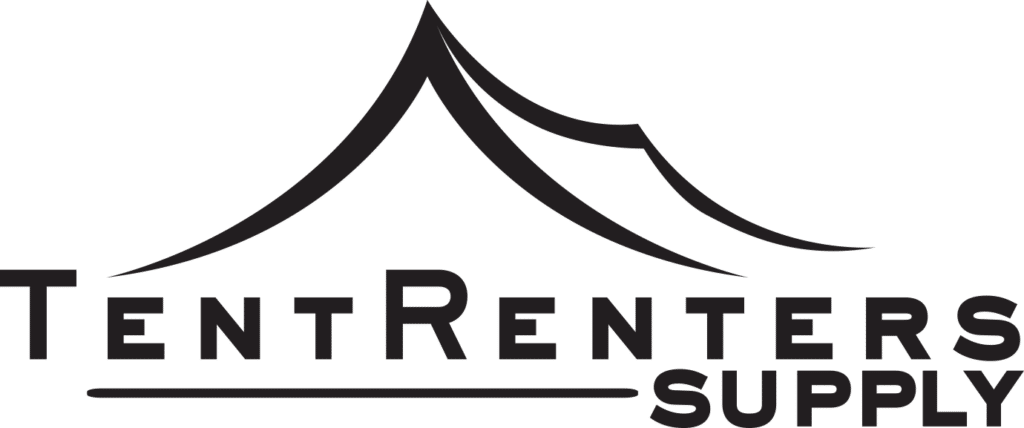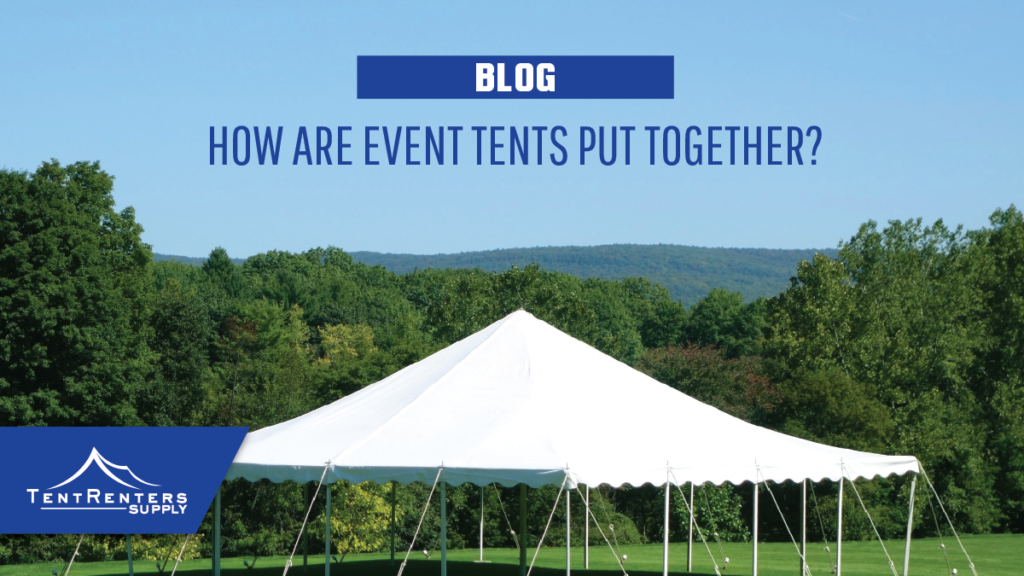Event Tents, Events
How are Event Tents Put Together?
Modern event tents are engineering marvels. Spanning small or vast spaces and designed for both short-term and long-term installation, event tents are available in various materials for customization and any number of uses. However, the bigger tents get, the harder they can be to set up. So, it can help to understand the requirements of tent setup and what challenges to expect. Learn how common tent styles are put together, what stabilization factors must be considered, and what tools are most helpful for building them.
The Bigger the Tent, the Bigger the Setup
It should come as no surprise that tent setup is more challenging the larger the tent is, not only because there are more parts to assemble but also because the tent’s materials can add considerable weight to the building process. For example, a 10×10 tent may weigh in at 120lbs, but the same size tent made with different materials could be closer to 400lbs. Understanding this differential can help you determine how many helpers you’ll need and what tools will be required for easy maneuvering. It’s also important to note that heavier tents will require heavier weights and additional stakes for safe anchoring, and these, too, will need to be collected and transported prior to tent setup.
Here Today, Gone Next Year
One of the amazing things about commercial and customizable event tents is that they can be designed for temporary use. From weddings, festivals, shows, and semi-permanent installations such as long-term shelters for seasonal agricultural use, construction hubs, or emergency needs, a tent’s job will dictate the setup process. Depending on where the event tent will be erected and how long it is intended to be installed, there are different anchoring requirements to mitigate factors like wind and inclement weather as well as foundational elements to consider like pavement restrictions, soil density, slope, and saturation.
Common Tents and Setup
- High Peak Tents
When you mention event tents, it’s likely this traditional design that comes to mind. Although support poles are affixed along the edges, it’s the taller center pole that creates the additional load-bearing capacity for the frame and the stability of the structure. This tent style requires additional anchoring, achieved with side strappings and stakes anchored in the ground, so it’s not recommended for hard surfaces like pavement, where drilling would cause damage. Helpful tools for high peak tents include tent stake drivers and extractors due to the number of stakes required to secure them.
- Frame Tents
Frame tents are some of the most versatile because they can be set up on any surface. These tents are designed to support the structure’s weight on the frame itself, so it doesn’t need additional poles in the center to support load-bearing. Limitations include a roofline lower than the high peak but with an unobstructed view from anywhere in the tent. Frame tents are structurally sturdy and can be secured with stakes or concrete blocks, making them suitable for various surfaces. To assemble, the top frame is put together and lifted to attach the legs. The larger the tent, the more challenging this step can be, so tools like tent jacks can hoist the top for less strain.
- Clear Span Tent
Clear span tents are designed with no obstructions between the span and width of the tent, resulting in a lower roofline and the widest width of the three. However, clear span tents are typically pitched on a foundation for medium to long-term use like airport hangers or warehouses and require a large crew and much more skill and expertise for setup.
Build the Best Tent with Tent Renter’s Supply
No matter the size of your custom event tent, you can rely on Tent Renters Supply to meet your needs and exceed your expectations with excellent design, quality manufacturing, and the highest quality materials and tools to ensure a fantastic product and safe and secure building experience. When you need the best tents available, choose to partner with the pros! Call us today to get started.

